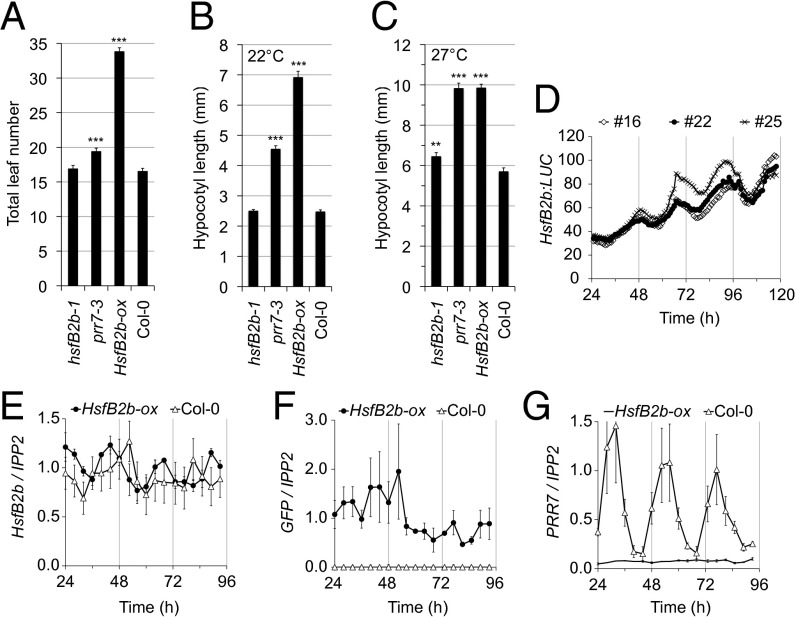Fig. 2.
HsfB2b alters growth and is a circadian gene. (A) Delayed flowering time of HsfB2b-ox. Plants were grown in soil under long-day conditions (16L:8D), and the total leaf number was determined at the time of bolting. The experiment was repeated twice, with similar results; n > 18. Error bars represent SD. (B) Hypocotyl length of 6-d-old hsfB2b-1, prr7-3, HsfB2b-ox, and Col-0 seedlings grown under short-day photoperiods at 22 °C. Error bars represent SEM of technical replicates; n > 18. (C) Hypocotyl length of 6-d-old seedlings after growth under constantly warm short days. Seedlings were grown at 22 °C for the first 3 d and then transferred to warm short days (27 °C). Error bars represent the SEM of technical replicates; n > 23. **P < 0.01; ***P < 0.001 (Student t test). (D) HsfB2b:LUC activity under LL. Seedlings were monitored for 5 d under LL after entrainment in 12L:12D for 1 wk. Three independent T2 lines are shown. Error bars represent SEM of technical replicates; n = 12. (E–G) Gene expression in HsfB2b-ox (proUBQ10:HsfB2b-GFP). The values are relative to IPP2 and measured by qPCR. (E) Endogenous HsfB2b, amplicon spanning the 3′ UTR. (F) GFP. Note that this line is in Col-0 WT background and thus has two HsfB2b transcripts (with and without GFP). (G) PRR7. Samples were obtained every 3 h on days 2–4 in LL after 12L:12D entrainment for 1 wk. The experiments were repeated at least twice. Error bars represent the SEM of biological replicates.

